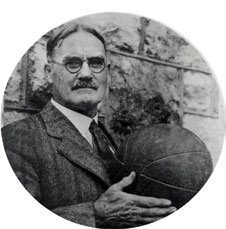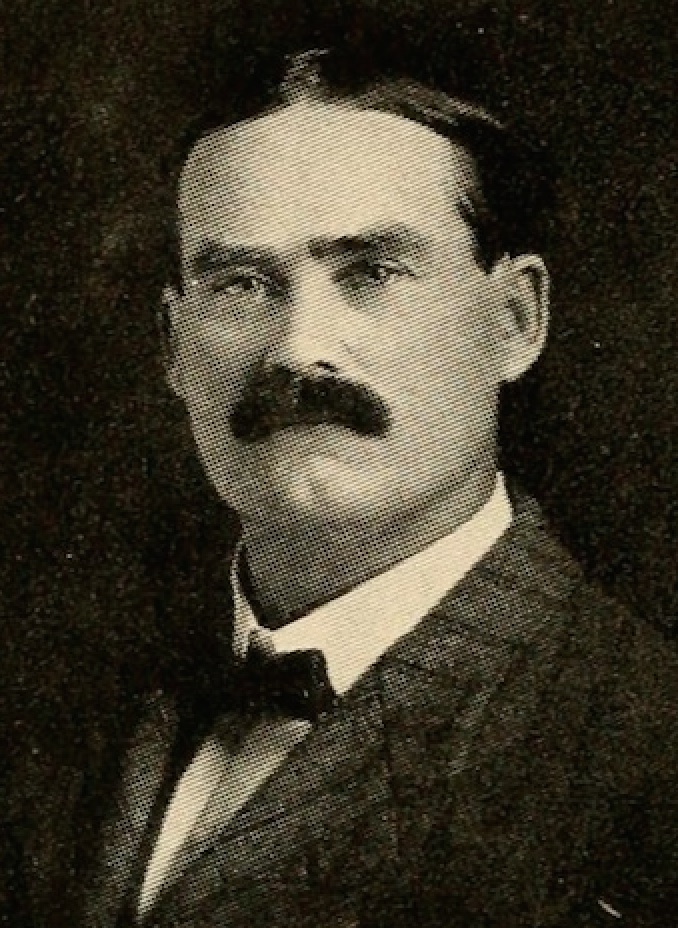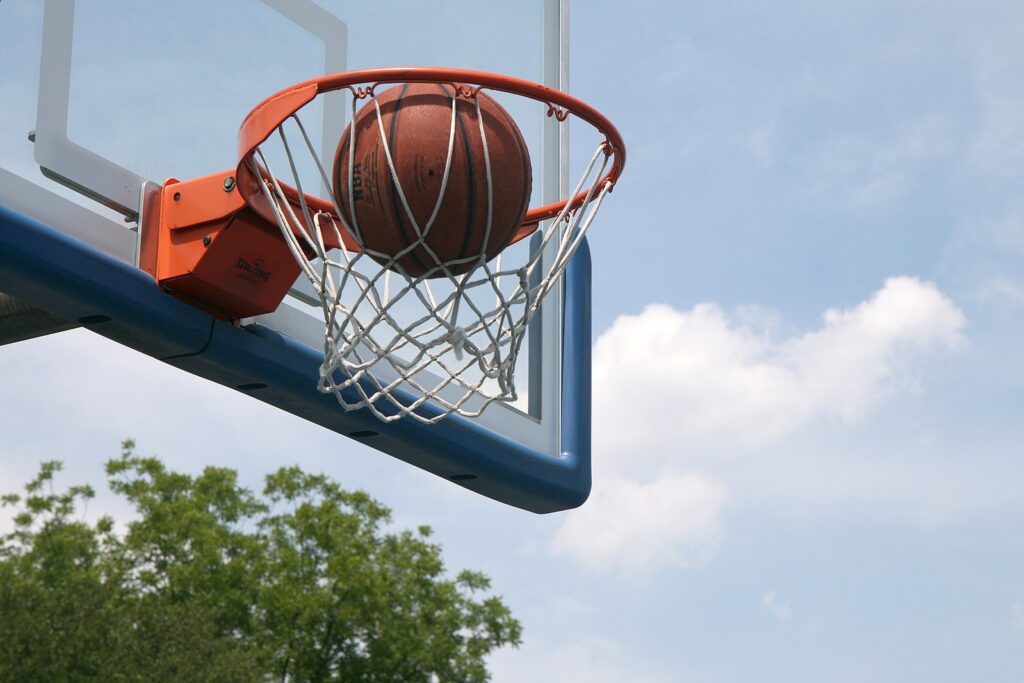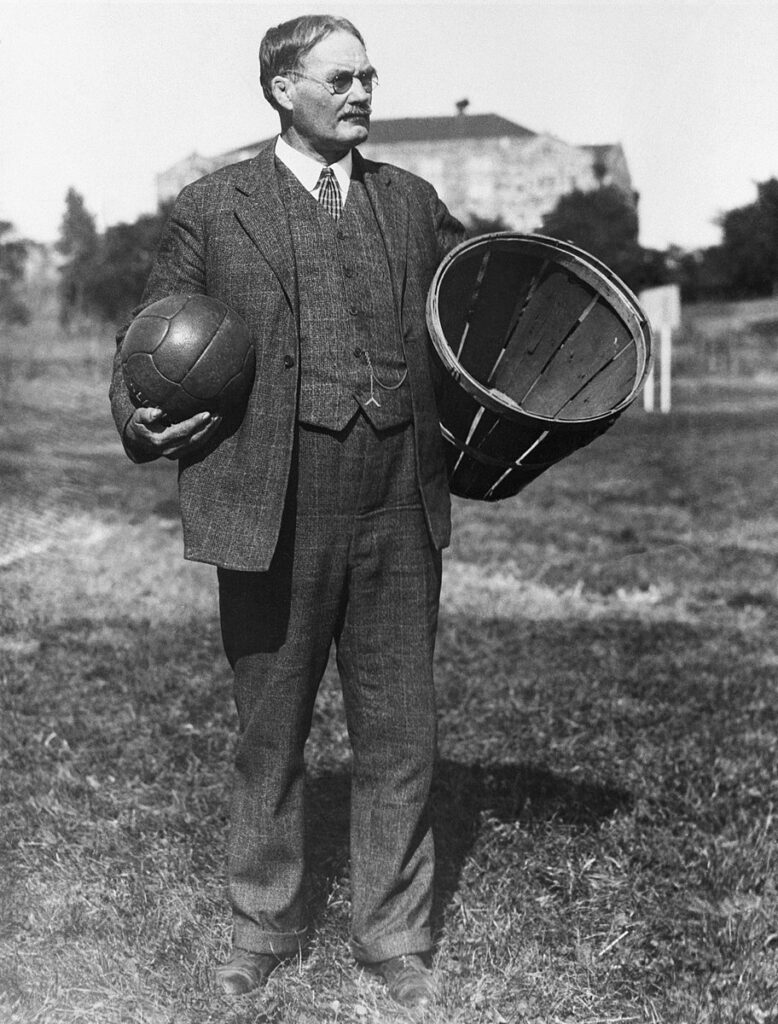People around the globe know Michael Jordan, LeBron James, and Stephen Curry. Many who revered Kobe Bryant were saddened when he passed away in 2020.
However, interestingly enough, basketball doesn’t even make it to the list of the world’s most popular sports in terms of its number of fans.
According to the World Atlas, the top five most popular sports in the world are:
- Soccer/football – 3.5 billion fans
- Cricket – 2.5 billion fans
- Hockey – 2 billion fans
- Tennis – 1 billion fans
- Volleyball – 900 million fans
Basketball ranked seventh with 800 million fans. However, aside from soccer or international football and tennis, there are no cricket, hockey, and volleyball stars that are as popular as Jordan, James, and Curry.
So, who invented basketball? The answer is James Naismith, a Canadian-born physical educator who worked in the United States. Let’s get to know him a little better.

James Naismith’s Early Life
Naismith was born on November 6, 1861, in what is now part of Ontario’s Mississippi Mills. His parents were Scottish but died early which left him an orphan. Growing up, he lived with his aunt and uncle.
He spent a lot of time playing a game called Duck on a Rock, which later played a big role when he invented basketball. Duck on a Rock is a combination of tag and throwing.
The rules, according to the Naismith Basketball Foundation, were: “Players formed a line from a distance of 15-20 feet from the base stone. Each player used a fist-sized stone. The object was to dislodge the ‘guards’ stone from the top of the base stone, by throwing and taking turns. The guard would be positioned in a neutral area away from the thrower. If one succeeded, they would go to the back of the line. If you missed the guards’ stone, the ‘chase’ would be on and if tagged before the stone was recovered, the players would trade places.”
Naismith learned there was a trick to throwing. A straight hard throw, or throwing the rock as you do in baseball, wasn’t as effective as soft lobbing a shot. His throwing style offered greater control and accuracy while being less likely to bounce away.
The basketball inventor enjoyed sports. He enrolled in McGill University in Montreal where he played American football, rugby, soccer, gymnastics, and lacrosse.
He would later earn a degree in physical education. He also became the first director of athletics at McGill University. However, he left school to pursue further studies in the United States.
In the U.S., Naismith studied and played football at the Young Men’s Christian Association (YMCA) International Training School in Springfield, Massachusetts.

The Invention of Basketball
While at McGill, Naismith already wanted to invent indoor sports that could be played during winter. His resolve was strengthened when he completed his physical director training program at the YMCA. He was hired as a faculty member in 1891.
At the time, Naismith was struggling with a rowdy class who didn’t have a way to release their pent-up energy during winter. He played indoor games with the class but it just wasn’t enough.
It was Luther Gulick, one of the people who shaped physical culture in the U.S., who ordered Naismith to come up with an indoor game that would offer YMCA students and athletes a form of physical distraction. Gulick integrated a sport and fitness component into the YMCA when it was founded in 1844.
Naismith only had 14 days to come up with a fun and physically satisfying indoor game. His criteria included:
- A game that would not take up much room
- A game that would ensure athletes stay in shape
- A game that is fair and not too rough
After being challenged by Gulick, Naismith remembered those games of Duck in a Row.
How Did He Come Up With the Game?
Naismith began by considering the most popular games at the time: baseball, football, hockey, lacrosse, rugby, and soccer. Except for hockey, he noted that all these games used a ball. Naismith knew that a ball must be the focal point of the game.
Naismith then considered safety. Out of all the sports he studied, the use of a larger circular ball seemed to be safest as it entailed less physical contact.
He also realized that physical contact generally happened when players would run with the ball. Naismith thought that passing the ball could lessen that.
Finally, he remembered how a soft lobbing shot was the key to winning Duck in Row so Naismith incorporated it into his invention.
With all the principles of the game in place, Naismith asked a janitor to bring him a couple of boxes that were installed on top of poles. But instead of boxes, the janitor brought two peach baskets. And that’s how “basket ball” was born.
13 Basic Rules of Basketball
Naismith created 13 basic rules of basketball. Most of the basic rules still apply today, particularly, the first three rules:
- Players can throw the ball in any direction using one or both hands.
- The ball can also be batted in any direction using a single hand or both hands.
- Players cannot run while they have the ball.
Naismith made minor changes by adding more rules. For example, the fourth rule describes how the ball should be held. According to his guidelines, the ball can be grasped in or between the hands without assistance from the player’s arms or any part of the body.
This guideline is no longer followed. Today, players can hold the ball with their arms and body. Many athletes often hold the ball between their arms and upper bodies while waiting for their teammates to reach their positions.
Naismith’s rule for second fouls was more stringent. The fifth rule dictates that holding, shouldering, striking, tripping, or pushing the opponent in any way is prohibited. If players break this rule, it counts as a foul.
A second foul from the same player will merit a disqualification. They will be out of the game and will not be replaced until a goal is scored or a shot is made.
Again, this no longer applies since participants can have as many as five fouls during a 40-minute game or six fouls while playing a 48-minute game.
Players will only be disqualified after surpassing these limits. However, they can be replaced during the game without waiting for the next shot.

First Basketball Game
The first basketball game was played on December 21, 1891. Eighteen YMCA students joined the first match.
They were divided into two teams of nine. Their goal was to shoot a soccer ball into a peach basket.
In a radio interview in 1939, Naismith shared: “I called the boys to the gym, divided them up into teams of nine, and gave them a little soccer ball. I showed them two peach baskets I’d nailed up at each end of the gym, and I told them the idea was to throw the ball into the opposing team’s peach basket. I blew the whistle, and the first game of basketball began.”
At that time, a jump ball was called every time a basket was made.
By 1892, basketball had become very popular at the YMCA. Many wanted to call it Naismith Ball, but the humble physical educator refused.
Between 1893 and 1894, Naismith worked with Spalding to create the first basketball. The brand eventually became the official ball of many basketball associations.
Naismith brought basketball with him when he joined the University of Kansas as a faculty member in 1898. He had completed his medical degree and became the first coach of the Kansas Jayhawks Men’s Basketball Team.
It was a National Collegiate Athletic Association (NCAA) Division I team that participated in the Big 12 Conference. Ironically, Naismith wasn’t a great coach with a 55-60 win-loss record.

Naismith’s Basketball Becomes Part of the Olympics
The National Basketball Association, the premier basketball organization in the world, was founded on June 6, 1946. Naismith died on November 28, 1939, at the age of 78.
Sadly, he never saw basketball become one of the most popular sports in the world. However, he did witness the birth of the NCAA March Madness, or the Division I men’s basketball tournament eight months before his death.
Despite his invention, Naismith never experienced wealth.
In 1935, the National Association of Basketball Coaches had to contribute and collect money so Naismith could see the official entry of basketball into the 1936 Summer Olympic Games in Berlin, Germany.
It must have been a great yet bittersweet experience for Naismith to see the inaugural Olympic basketball championship between the USA and Canada, his home and birth countries. The Americans won 19-8.
Naismith was awarded the Olympic medals throughout the competition.
Basketball Today
Around 20 million Americans play basketball every year. Many play in public courts while others play in garages. It has spread around the world, with some saying that there are over 70,000 basketball leagues globally.
The sport is popular in the following countries:
- United States
- Philippines
- Australia
- Canada
- Iraq
Naismith has been honored in his home and birth countries for inventing basketball. In 1976, he was named a National Historic Person in Canada.
During the 100th founding anniversary of basketball in 1991, Canada also produced commemorative stamps which included one with Naismith’s name on it.
He didn’t want his name attached to the invention. But basketball enthusiasts will always remember the person who invented the game: James Naismith.

